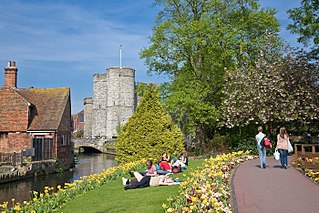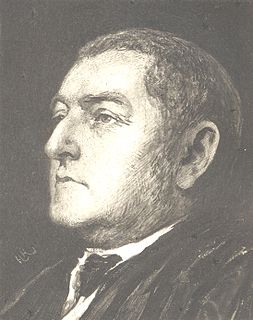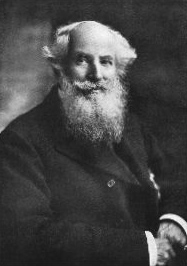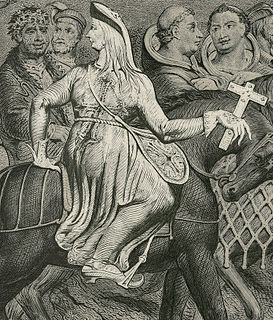The Canterbury Tales is a collection of stories, mostly in verse, written by Geoffrey Chaucer chiefly from 1387 to 1400. They are held together in a frame story of a pilgrimage on which each member of the group is to tell two tales on the way to Canterbury, and two on the way back. Fewer than a quarter of the projected tales were completed before Chaucer's death. [1] It is uncertain in what order Chaucer intended the tales to appear; moreover it is very possible that, as a work-in-progress, no final authorial order of tales ever existed.

The Canterbury Tales is a collection of 24 stories that runs to over 17,000 lines written in Middle English by Geoffrey Chaucer between 1387 and 1400. In 1386, Chaucer became Controller of Customs and Justice of Peace and, in 1389, Clerk of the King's work. It was during these years that Chaucer began working on his most famous text, The Canterbury Tales. The tales are presented as part of a story-telling contest by a group of pilgrims as they travel together from London to Canterbury to visit the shrine of Saint Thomas Becket at Canterbury Cathedral. The prize for this contest is a free meal at the Tabard Inn at Southwark on their return.

Geoffrey Chaucer was an English poet and author. Widely considered the greatest English poet of the Middle Ages, he is best known for The Canterbury Tales. Chaucer has been styled the "Father of English literature" and was the first writer buried in Poets' Corner of Westminster Abbey.

Canterbury is a historic English cathedral city and UNESCO World Heritage Site, situated in the heart of the City of Canterbury, a local government district of Kent, England. It lies on the River Stour.
Contents
Several different orders are evident in the manuscripts of the work; in addition certain orders and structures of the Tales have been proposed by scholars.










